Turkey Activities
This post contains affilate links. I receive a small stipend when you purchase something on Amazon. However, I stand behind each product and wouldn’t recommend something I didn’t believe in. This is at no cost to you.
Now that Halloween is over (??) it’s time to move on to Thanksgiving. I’m so thankful for other educators and activists who teach me how to be more respectful of other cultures and share accurate history. Thanksgiving is challenging to teach, because it is so important that we portray it accurately. Did you know that November is Indigenous People’s Month? It’s a great time to celebrate the culture of many Indigenous tribes.
If you’d still like to celebrate the current ways students celebrate Thanksgiving, learning about turkeys is a great way to build that into your lessons. I wanted to quickly share a bit about thematic units and then share some activities you could use. At the end of this post, I share a free story problem book.
If you’d just like the activities, you can get those HERE.
Why Teach Thematic Units?
Research shows that using thematic units is an effective way to engage students and teach challenging standards. When we use the same content for days or weeks, students can focus on the SKILL and not the CONTENT.
When we use the same content over and over, students don’t have to learn new vocabulary each time. This is especially important for students learning English, students that struggle with comprehension, and students with language disorders.
Learning about turkeys for several days or weeks means that your students are bringing in background knowledge into the lessons. They’re not having to process new information about turkeys while also learning new skills.
Thematic units are also seen as “cutesy” or not rigorous. But that’s a misconception and it’s all in how they are implemented. Instead of JUST doing activities and reading silly books, we can use these units to bring in more challenging comprehension and writing activities.
In this post, I’m going to focus on language skills. However, I always include science and social studies when they are reading and writing about turkeys.
Books
It is so important to add quality texts to any of our thematic units. I like to include fiction and nonfiction books into our unit so that we can hit a lot of skills. Here are a few of my favorite books for your turkey unit. Click each book to grab it on Amazon. You can also find alot of these at your local library or even on Youtube.






Activities
When I’m teaching a thematic unit, I try to break it up with other content. For example, we might use a turkey book for comprehension on Monday, Wednesday and Friday or Monday and Tuesday. We would come back to it in a few days. Sometimes we would do a writing activity right after…if it paired with the book. If not, we would do thematic writing activities on different days. This makes the learning more novel and stretches the content out longer.
Before starting any thematic unit, it’s important to activate students’ prior knowledge. Doing a whole group discussion is also a great assessment to see where students are. While it’s not important that students know about turkeys, it does help you know what information to present to keep the unit engaging.
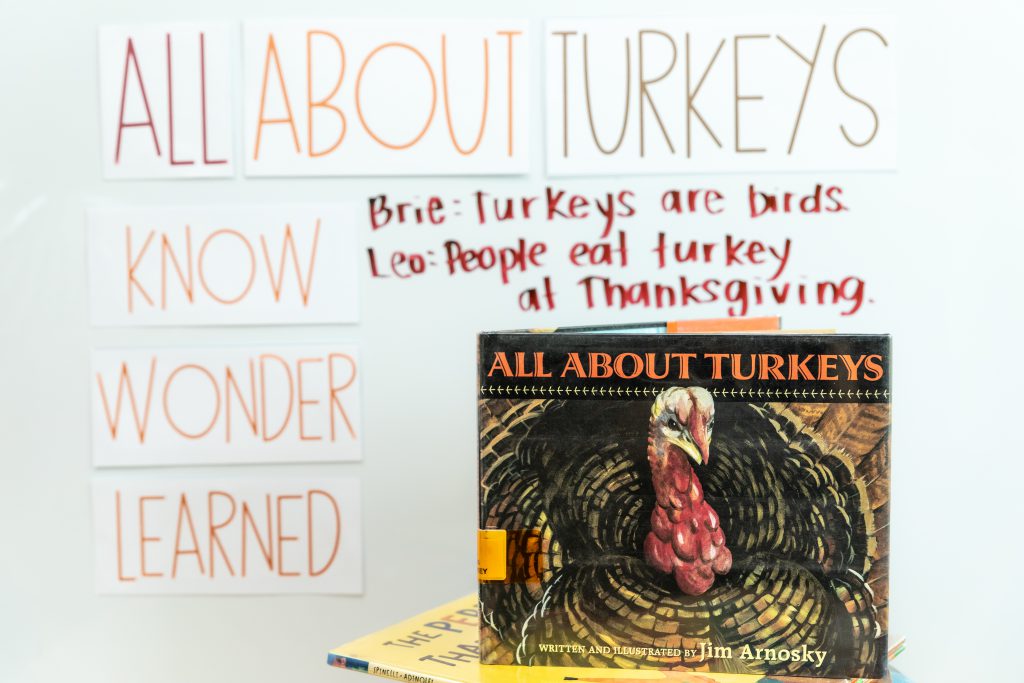
I could only find a few quality non-fiction texts, so I made one for my students and yours. Each page has a few facts on it for students to read and illustrate. For primary learners, this is not a leveled text. I definitely wouldn’t use it for guided reading unless you have very fluent readers. I would choose a few pages to read together as a class and illustrate each day until they have a complete book.

Here are a few other comprehension activities you could use after a non-fiction book. Asking questions, sharing their schema and finding the main idea are just a few ways to practice reading skills in a thematic unit.
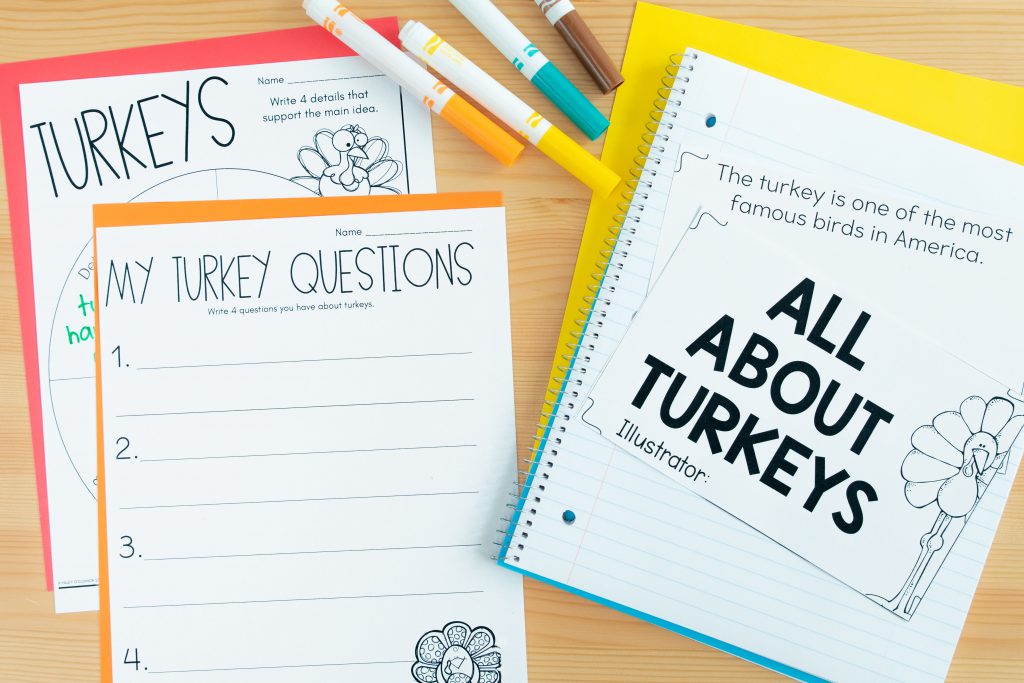

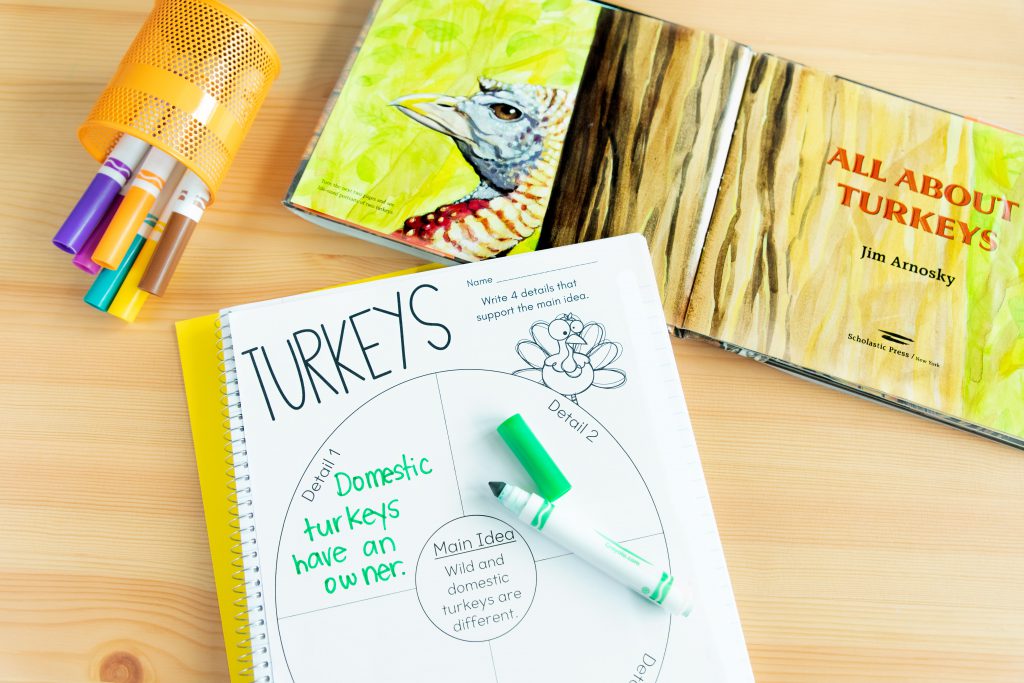
While it’s not necessarily important for students to know the vocabulary, it IS important for them to know how to solve tricky vocabulary words. Digitally, students can use word banks for vocabulary or write their own sentences.
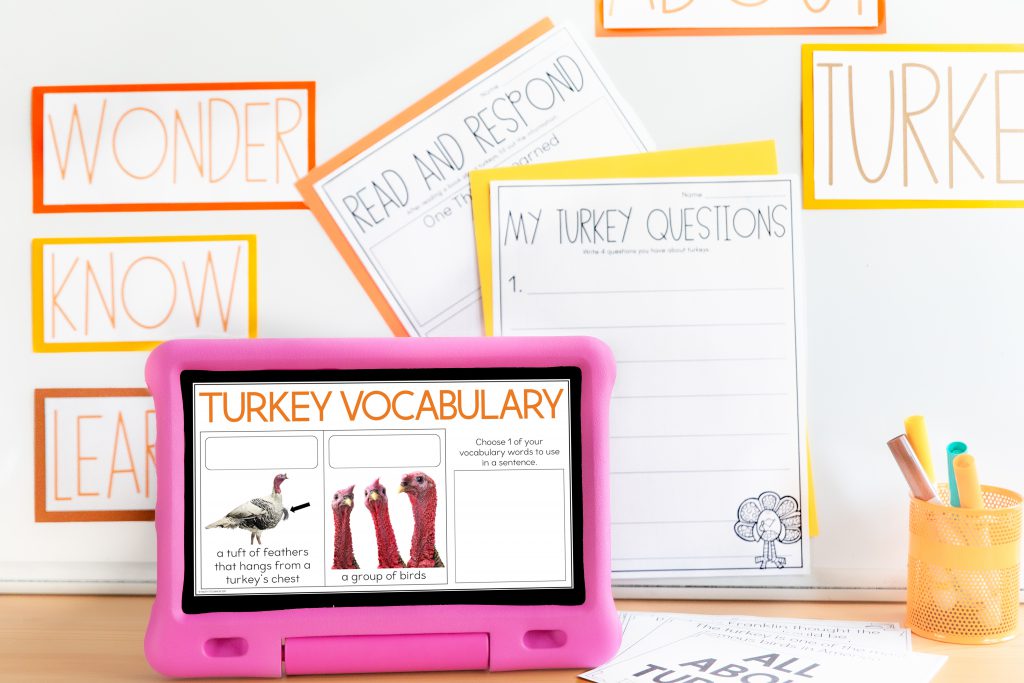
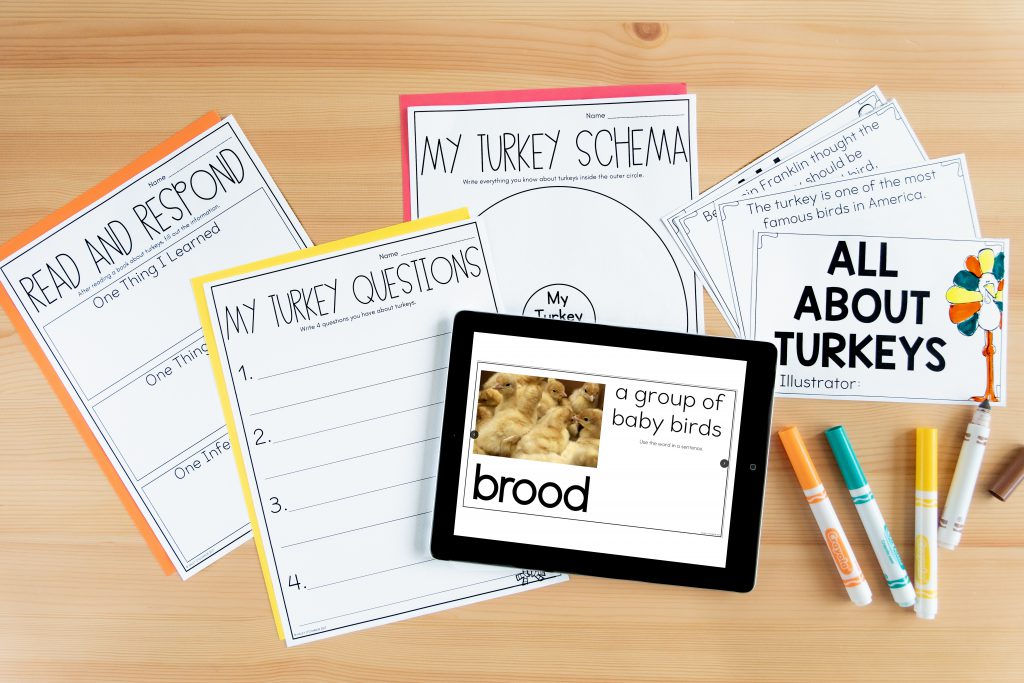

Finally, I LOVE using our theme to practice story problems. It brings a bit of novelty to math. You can grab this free story problem book below.
